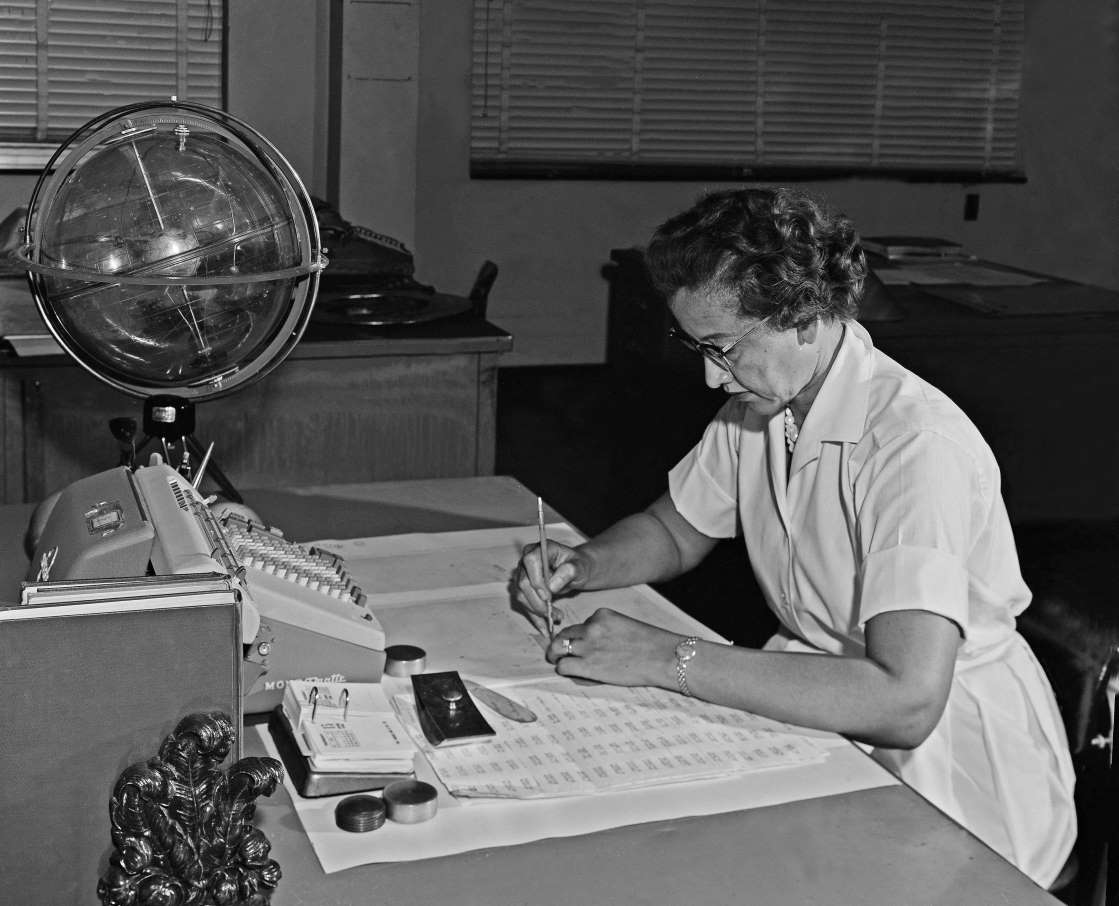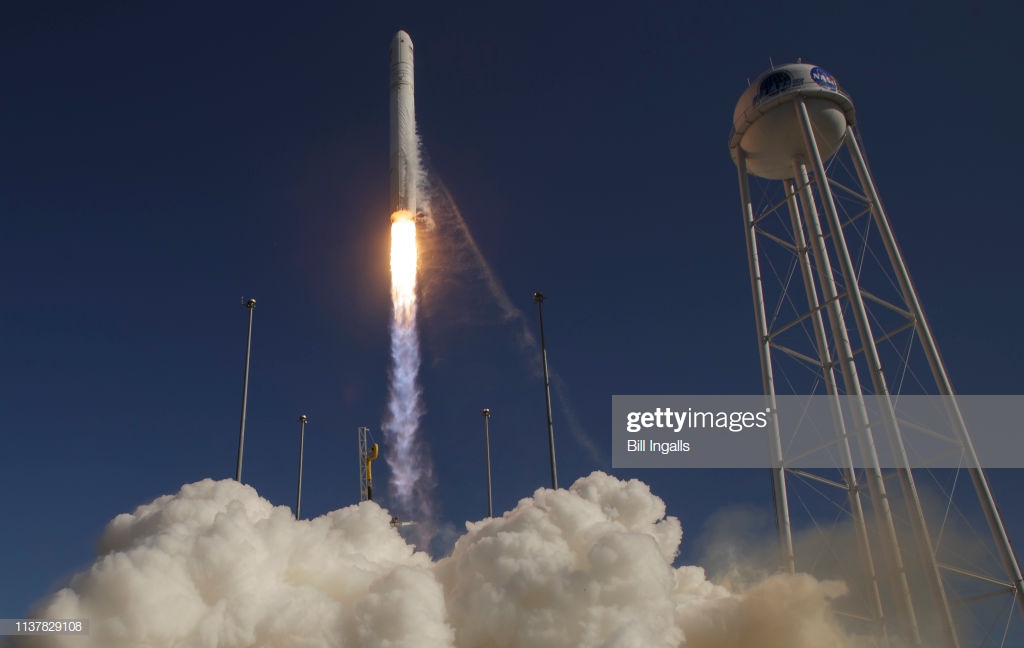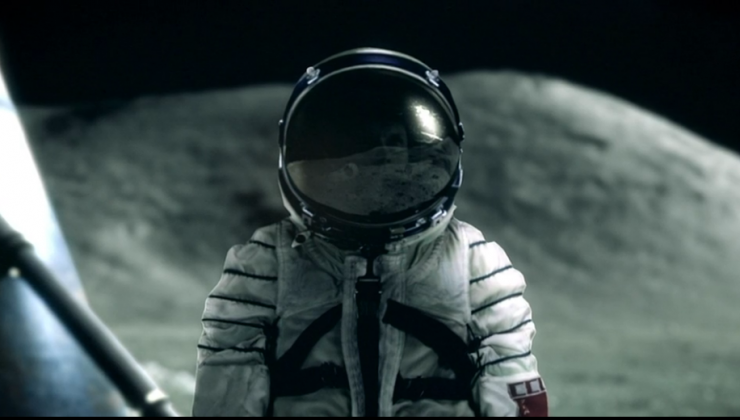Tag: nasa
Katherine Johnson, ‘hidden figure’ at NASA during 1960s space race, dies at 101
When Katherine Johnson began working at the National Advisory Committee for Aeronautics in 1953, she was classified as “subprofessional,” not far outranking a secretary or janitor.
Hers was a labor not of scheduling or cleaning but rather of mathematics: using a slide rule or mechanical calculator in complex calculations to check the work of her superiors — engineers who, unlike her, were white and male.
Her title, poached by the technology that would soon make the services of many of her colleagues obsolete, was “computer.”
Mrs. Johnson, who died Feb. 24 at 101, went on to develop equations that helped the NACA and its successor, NASA, send astronauts into orbit and, later, to the moon. In 26 signed reports for the space agency, and in many more papers that bore others’ signatures on her work, she codified mathematical principles that remain at the core of human space travel.
She was not the first black woman to work as a NASA mathematician, nor the first to write a research report for the agency, but Mrs. Johnson was eventually recognized as a pathbreaker for women and African Americans in the newly created field of spaceflight.
Like most backstage members of the space program, Mrs. Johnson was overshadowed in the popular imagination by the life-risking astronauts whose flights she calculated, and to a lesser extent by the department heads under whom she served.
She did not command mainstream attention until President Barack Obama awarded her the Presidential Medal of Freedom — the country’s highest civilian honor — in 2015. The next year, her research was celebrated in the best-selling book “Hidden Figures” by Margot Lee Shetterly and the Oscar-nominated film adaptation starring Taraji P. Henson, Octavia Spencer and Janelle Monáe.
Mrs. Johnson was “critical to the success of the early U.S. space programs,” Bill Barry, NASA’s chief historian, said in a 2017 interview for this obituary. “She had a singular intellect, curiosity and skill set in mathematics that allowed her to make many contributions, each of which might be considered worthy of a single lifetime.”
A math prodigy from West Virginia who said she “counted everything” as a child — “the steps to the road, the steps up to church, the number of dishes and silverware I washed” — Mrs. Johnson worked as a schoolteacher before being hired as a computer at the NACA’s flight research division, based at Langley Research Center in Hampton, Va.
The agency was established in 1915 and began enlisting white women to work as computers 20 years later. Black computers, assigned mainly to segregated facilities, were first hired during the labor shortage of World War II. Mrs. Johnson was one of about 100 computers, roughly one-third of whom were black, when she joined the NACA.
The movie “Hidden Figures” took occasional liberties with fact to emphasize the indignities of segregation. Mrs. Johnson, played by Henson, is forced to run half a mile to reach the “colored” bathroom. In reality, Mrs. Johnson said, she used the bathroom closest to her desk.
Mrs. Johnson had a bachelor’s degree in mathematics and spent her early career studying data from plane crashes, helping devise air safety standards at a time when the agency’s central concern was aviation. Then, in October 1957, the launch of the Soviet satellite Sputnik thrust the space race into full tilt.
Mrs. Johnson and dozens of colleagues wrote a 600-page technical report titled “Notes on Space Technology” outlining the mathematical underpinnings of spaceflight, from rocket propulsion to orbital mechanics and heat protection.
One of rocket science’s most vexing challenges, they soon realized, was calculating flight trajectories to ensure that astronauts returned safely to Earth, splashing down in the ocean reasonably close to a Navy vessel waiting to pluck them from the water.
For astronauts such as Alan B. Shepard Jr., who became the first American in space when Freedom 7 launched on May 5, 1961, the math was relatively straightforward. Shepard’s craft rose and fell, like a champagne cork, without entering orbit.
Calculating the trajectory for an orbital flight, such as the one to be undertaken by Marine pilot John Glenn in 1962, was “orders of magnitude more complicated,” said Shetterly, the “Hidden Figures” author.
“I said, ‘Let me do it,’ ” Mrs. Johnson recalled in a 2008 NASA interview. “You tell me when you want it and where you want it to land, and I’ll do it backwards and tell you when to take off.”
Mrs. Johnson’s findings, outlined in a 1960 paper she wrote with engineer Ted Skopinski, enabled engineers to determine exactly when to launch a spacecraft and when to begin its reentry. The paper, “Determination of Azimuth Angle at Burnout for Placing a Satellite Over a Selected Earth Position,” marked the first time a woman wrote a technical report in NASA’s elite flight research division.
“You could work your teeth out, but you didn’t get your name on the report,” she said in the 1992 oral history, crediting her breakthrough to what she described as an assertive personality. When a superior said that she could not accompany male colleagues to a briefing related to her work, Mrs. Johnson asked, “Is there a law that says I can’t go?” Her boss relented.
Mrs. Johnson’s handwritten calculations were said to have been more trusted than those performed by mainframe computers. A short time before Glenn launched into space, he asked engineers to “get the girl to check the numbers.”
“All the women were called ‘the girls,’ ” said Barry, “and everyone knew exactly which girl he was talking about.” Mrs. Johnson, who was then 43, spent a day and a half checking the trajectory calculations made by the IBM computer before giving the go-ahead to Glenn, who became the first American astronaut to orbit the Earth.
Modest beginnings
Katherine Coleman was born in White Sulphur Springs, W.Va., then a town of about 800, on Aug. 26, 1918. Her mother was a former teacher. She credited her proclivity for mathematics to her father, a farmer who had worked in the lumber industry and could quickly calculate the number of boards a tree could produce.
By 10, Katherine had finished all the coursework offered at her town’s two-room schoolhouse. Joined by her mother and her three older siblings, she moved to Institute, a suburb of the state capital, to attend the laboratory school of West Virginia State College while her father remained at home to support the family.
Mrs. Johnson went on to study at West Virginia State, a historically black college, with plans to major in French and English and become a teacher. A mathematics professor — W.W. Schiefflin Claytor, widely reported to be the third African American to receive a doctorate in math — persuaded her to change fields.
Mrs. Johnson later recalled his saying: “You’d make a good research mathematician, and I’m going to see that you’re prepared.” She had never heard of the position before. “I said, ‘Where will I get a job?’ And he said, ‘That will be your problem.’ ”
After graduating in 1937, at 18, she taught at a segregated elementary school in Marion, Va., a town near the North Carolina border.
Three years later, she was one of three black students selected to integrate West Virginia University’s graduate programs. She dropped out of her master’s in mathematics program after one semester to start a family with her husband, James Goble, a chemistry teacher. She later returned to teaching, in West Virginia, before a brother-in-law suggested she apply for a computer position at Langley.
Goble died of cancer in 1956, and three years later Mrs. Johnson married James Johnson, an Army artillery officer. He died in 2019.
Mrs. Johnson’s death was confirmed by lawyer and family representative Donyale Y.H. Reavis, who said she died at home in Newport News, Va., but did not cite a specific cause.
Survivors include two daughters from her first marriage, Joylette Hylick of Mount Laurel, N.J., and Katherine Moore of Greensboro, N.C.; six grandchildren; and 11 great-grandchildren. Her daughter Constance Garcia died in 2010.
Mrs. Johnson was invited to move to Houston in the mid-1960s to help establish what is now the Lyndon B. Johnson Space Center, but she declined the offer to maintain her family’s ties to the Hampton community, Shetterly said.
At Langley, where she retired in 1986, she performed calculations that determined the precise moment at which the Apollo lunar lander could leave the moon’s surface to return to the command module, which remained in orbit high above. She also contributed to NASA’s space shuttle and Earth satellite programs.
After the release of “Hidden Figures,” Mrs. Johnson played down the importance of her role in the early years of the space program. “There’s nothing to it — I was just doing my job,” she told The Washington Post in 2017.
“They needed information, and I had it, and it didn’t matter that I found it,” she added. “At the time, it was just a question and an answer.”
Article via MSN
NASA discovers new Earth-like planet just 31 light years away
Nasa’s planet spotting telescope has uncovered another three planets, which scientists say include the first nearby super-Earth. The planet, called GJ 357 d, orbits a star around 31 light years away in the so-called habitable zone, an area far enough from its star to not be too hot but close enough to not be too cold. In this region, it is possible for liquid water to exist on the surface of a planet if it is rocky, although further research is needed to work out whether GJ 357 d’s atmosphere is dense and warm enough to host liquid water.
NASA wants you to get your boarding pass to Mars
You probably won’t visit Mars for a long time, if ever. You might have a way to go in spirit, though. NASA has introduced a “Send Your Name” campaign that will put your name on the Mars 2020 rover, leaving a long-term record of your name on the Red Planet. It won’t be easy to read — JPL is using an electron beam to etch over a million names on a dime-sized chip — but you will get a “boarding pass” to prove that your name is Mars-bound.
The option is available to virtually anyone in the world and doesn’t require more sensitive info than your email address. NASA cautions that your inclusion is “subject to review,” so pranksters and spammers aren’t guaranteed to get their names on the rover. You have until September 30th to participate.
NASA isn’t shy about the motivations here: it’s drumming up hype for its extraterrestrial missions, whether it’s Mars exploration or its ambitious plan to return astronauts to the Moon. Regardless, it’s hard not to get a little bit excited knowing that you’ll have some kind of presence on Mars, even if it’s purely symbolic.
Article via ENGADGET
The moon is shrinking and shaking, Nasa says
Article via Independent
The Moon is shrinking – and shaking as it does, according to new Nasa data.
Over the last decade, scientists have established that as the inside of the Moon cooled, it shrivelled up a like a raisin. That left it riven with cliffs called “thrust faults”, marked all over its surface.
Now a new analysis, using data from Nasa missions, suggests that the Moon could still be shrinking today. As it does, it is experiencing moonquakes along those thrust faults, with the planet shaking along those cliffs.
Scientists compare the process to the way a grape will gradually wrinkle up, adding lines as it cools and shrinks. But unlike a grape’s skin, the crust around the Moon cannot stretch and is instead brittle, making it break apart as the shrinking happens.
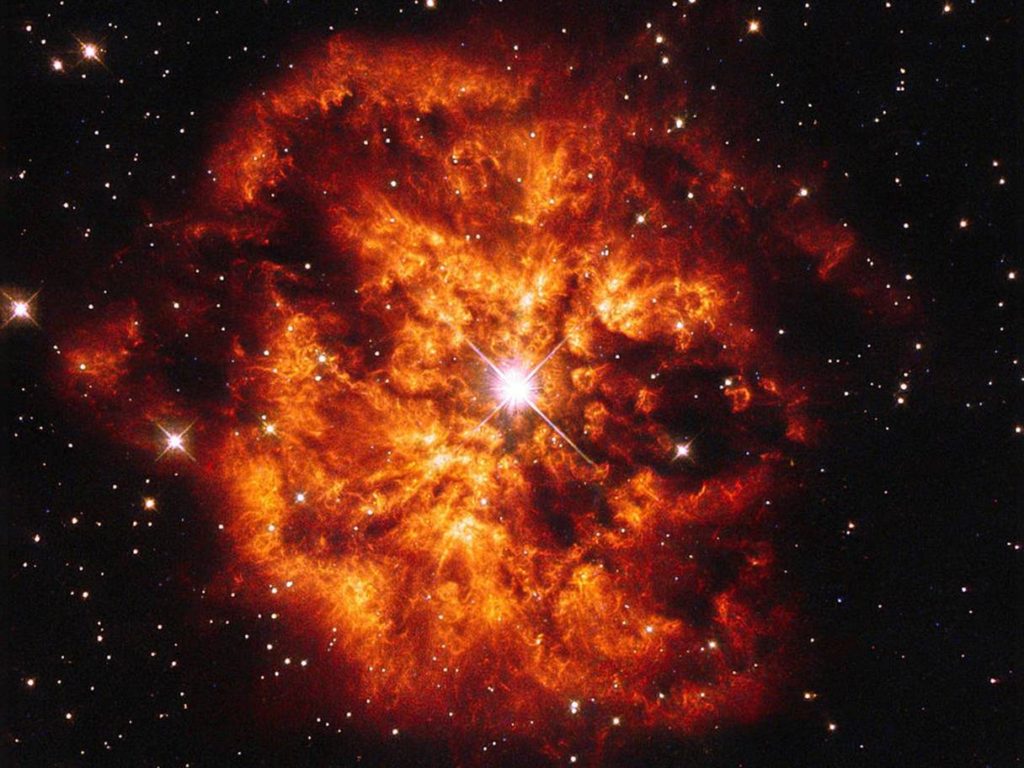
The faults form when the crust moves around, and one part of the crust is pushed up over another. They form unusual-looking cliffs that can be seen from the surface, standing tall and many miles long.
The new research was made possible by the creation of an algorithm that processed seismic data that was taken in the 1960s and 1970s. It helped shed new light on those moonquakes, including allowing for a better understanding of where they are actually coming from.
Once that location data was generated, it could be laid on top of the images of the thrust faults that were taken from a 2010 study that used pictures from Nasa’s Lunar Reconnaissance Orbiter.

Comparing the two, they found that at least eight of the rumbles were coming from movement of plates beneath the Moon’s surface, not from asteroid impacts or other explanations. That helped confirm that the Moon is still experiencing true tectonic activity, according to the new paper published in Nature Geoscience.
The instruments left by Apollo astronauts in the past finished their work in 1977. But scientists think this shaking and shrinking is still happening to this day, with images seeming to show evidence of recent movement, such as boulders and landslides that appear to have recently fallen over.
“We found that a number of the quakes recorded in the Apollo data happened very close to the faults seen in the LRO imagery,” said Nicholas Schmerr, an assistant professor of geology at the University of Maryland, in a statement.
“It’s quite likely that the faults are still active today. You don’t often get to see active tectonics anywhere but Earth, so it’s very exciting to think these faults may still be producing moonquakes.”
The seismic data was taken from instruments that astronauts dropped onto the surface during Apollo missions. The one left by Apollo 11 died after a few weeks – but the rest kept measuring, eventually picking up 28 different, shallow moonquakes between 1969 and 1977.

Of those quakes, eight were picked up near to the faults that could be seen in images of the Moon’s surface. That led them to conclude the two were connected.
What’s more, most of the shakes happened when the Moon was at the point of its orbit furthest away from the Earth. That happens because the stress from Earth’s gravity disrupts its crust.
“We think it’s very likely that these eight quakes were produced by faults slipping as stress built up when the lunar crust was compressed by global contraction and tidal forces, indicating that the Apollo seismometers recorded the shrinking moon and the moon is still tectonically active,” said Thomas Watters, lead author of the research paper and senior scientist in the Center for Earth and Planetary Studies at the Smithsonian Institution in Washington.
Scientists now hope to return to the Moon and learn more about what is happening to it. The Trump administration has ordered Nasa to head back as soon as it can, and hopes to have astronauts back on its surface in five years.
“For me, these findings emphasize that we need to go back to the moon,” Schmerr said. “We learned a lot from the Apollo missions, but they really only scratched the surface. With a larger network of modern seismometers, we could make huge strides in our understanding of the moon’s geology.
“This provides some very promising low-hanging fruit for science on a future mission to the moon.”
NASA was sold faulty aluminum in 19-year scam
The space agency linked it to two mission failures.
Article via CNET
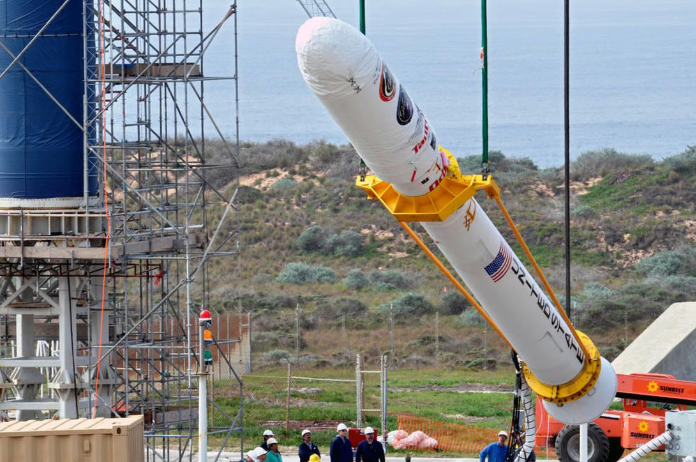
NASA found that the 2011 Glory mission failed due to faulty aluminum. NASA
NASA on Tuesday revealed that a pair of failed missions were caused by a 19-year aluminum scam.
The space agency previously said the 2009 Orbiting Carbon Observatory and 2011 Glory missions malfunctioned when the protective nose cones on the Taurus XL rockets failed to separate on command.
However, a joint investigation involving NASA and the Justice Department revealed that the problem was caused by aluminum extrusion maker Sapa Profiles, which falsified critical tests over 19 years.
Employees at the company’s Portland, Oregon, facilities tweaked failing tests so materials appeared to pass from 1996 to 2015, according to the Justice Department.
“They then provided the false test results to hundreds of customers across the country, all to increase corporate profits and obtain production-based bonuses,” wrote G. Zachary Terwilliger, US attorney for the Eastern District of Virginia.
Sapa, which has since changed its name to Hydro Extrusion Portland, agreed to pay $46 million to the US government and other commercial customers — which doesn’t even come close to the $700 million NASA lost as a result of Taurus XL failures. The company is also excluded from contracting with the federal government.
“It is critical that we are able to trust our industry to produce, test and certify materials in accordance with the standards we require. In this case, our trust was severely violated,” said Jim Norman, NASA’s director for launch services, in a release.
Scientists develop a clock so accurate it could detect dark matter
The most accurate atomic clock ever produced will make your mind go tick, tick, boom.
You might not be able to fit it on your wrist, but physicists have created two clocks that are so accurate they won’t lose time in the next 15 billion years.
The research, published Wednesday in Nature, describes an atomic clock that uses an optical lattice composed of laser beams trapping ytterbium atoms. Every atom has a consistent vibrational frequency, which allows physicists the opportunity to measure how the ytterbium atoms transition between two energy levels — essentially creating the clock’s “tick”.
Notably, the physicists based at the National Institute of Standards and Technology (NIST) in Maryland compared two independent atomic clocks to record historical new performance benchmarks across three key measures: systematic uncertainty, stability and reproducibility.
Andrew Ludlow, project leader, explained to NIST that these three measures can be considered the “royal flush of performance” for atomic clocks. The ability to reproduce the accuracy of the ytterbium lattice clock in two independent experiments is of particular importance because it shows for the first time, according to Ludlow, that the performance of the clock is “limited by Earth’s gravitational effects.”
Read more via CNET
NASA Live: Earth Views from the Space Station
Behold, the Earth! See live views of Earth from the International Space Station coming to you by NASA’s High Definition Earth Viewing (HDEV) experiment.
While the experiment is operational, views will typically sequence through the different cameras. If you are seeing a black image, the Space Station is on the night side of the Earth. If you are seeing an image with text displayed, the communications are switching between satellites and camera feeds are temporarily unavailable. Between camera switches, a black & gray slate will also briefly appear.
The experiment was activated on April 30, 2014 and is mounted on the External Payload Facility of the European Space Agency’s Columbus module. This experiment includes several commercial HD video cameras aimed at the Earth which are enclosed in a pressurized and temperature controlled housing. To learn more about the HDEV experiment, visit: https://eol.jsc.nasa.gov/ESRS/HDEV/ Please note: The HDEV cycling of the cameras will sometimes be halted, causing the video to only show select camera feeds. This is handled by the HDEV team, and is only scheduled on a temporary basis. Nominal video will resume once the team has finished their scheduled event.
Days Away From Mars, NASA Awaits ‘The Seven Minutes Of Terror’
Article via Forbes
Flying the freeway to Mars, the robotic probe InSight nears the end of its 301-million-mile cruise with nary a hitch and hardly a hiccup.
But looming just ahead is the exit ramp—the Martian atmosphere.
“There’s a classic term for it,” says Rob Grover of the Jet Propulsion Laboratory in Pasadena, California. “The seven minutes of terror.”
That’s approximately the time InSight takes to land, a spooky 70-mile descent from the top of the atmosphere down to the ground.
Says Grover: “There is very little room for things to go wrong.”
Yet hundreds of things must go right, all without NASA’s backseat driving; during landing, there’s no joysticking.
“We can’t fly the vehicle in ourselves,” Grover says. “The flight computer on board has to do it on its own. Everything has to work perfectly by itself.”
And for those seven minutes: “Our hearts will be pounding.”
 On left, the cruise stage, now separated; on right, the backshell containing the lander.Credit: NASA / JPL-Caltech
On left, the cruise stage, now separated; on right, the backshell containing the lander.Credit: NASA / JPL-Caltech
InSight lands November 26, the Monday after Thanksgiving, at 11:47 AM Pacific Time (2:47 PM Eastern).
Before the clock starts: The cruise stage—its delivery done—detaches from the capsule containing the lander.
Then the capsule—just before reaching the atmosphere—points itself, “tilting down 12 degrees,” says Grover. NASA’s leeway is minuscule, only “plus or minus a quarter of a degree.” Too shallow an angle, and the spacecraft skips off the atmosphere. Too steep, and it burns up.
And now the terrifying part.

Illustration: EDL (entry, descent, and landing) is underway.Credit: NASA / JPL-Caltech
InSight thunders in at 12,300 miles per hour—almost three-and-a-half miles per second.
Friction roasts it. The temperature on the heat shield hits 1,800 degrees Fahrenheit.
Friction also brakes it; within two minutes, the speed of the spacecraft slows by more than 90 percent.
Yet it’s still going 1,000 miles per hour.
At seven miles up—commercial airliners fly about that high—the parachute opens. Within 15 seconds, the heat shield jettisons. For the first time, the lander is exposed to Martian air.
Another 10 seconds, and the three legs deploy. One mile above the ground, the lander falls from the backshell. Descent engines turn on. Touchdown velocity is 5 miles per hour.

Illustration: InSight lander, with parachute, descending.Credit: NASA / JPL-Caltech

Illustration: InSight, legs extended, touching down.Credit: NASA / JPL-Caltech
Much could happen. The parachute might not open properly. The falling heat shield could graze the lander. Descent engines may not shut off. A large surface rock could sit in the way. One of the legs might not release and lock.
Those scenarios, though unlikely, are not implausible. Any of them could cause an erratic landing.
“If the lander were to tip over,” says Grover, “it doesn’t have the ability to right itself. We would be stuck in that position. The science would be very difficult to do.”
Not helping any of this: The probe touches down during dust storm season.
“A global dust storm can blow up in a matter of days,” acknowledges Grover. But NASA isn’t fretting.
“We’ve been rehearsing for that,” he says. “We’ll land successfully in just about any conditions thought possible during the season.”
Right now, atmospheric dust is minimal; weather at the landing site appears normal.

Illustration: the InSight lander, deployed on the Martian surface. InSight will study the “inner space” of Mars, says NASA—its crust, mantle, and core. Credit: NASA / JPL-Caltech
Grover—a 17-year JPL veteran, including six years on InSight—admits “there’s a lot of anticipation” at NASA about the landing.
“A combination of excitement and nervousness,” he says. “But there’s a sense we’ve done everything we can.”
Any surprises from the mission, he expects, will be good ones.
“There’s magic around it,” he says, “even better than Christmas.” Just get past those seven minutes.


